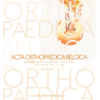Clinical and MRI outcomes of subacromial impingement syndrome with conservative treatment: a 21-month prospective study
sub-acromial impingement; degenerative rotator cuff disease; shoulder; natural history; radiology; MRI
Published online: Jan 20 2023
Abstract
Background: Information is lacking on the natural history of early stages of degenerative rotator cuff disease. Such information can be obtained by using clinical and imaging assessment after conservative treatment in affected patients.
Hypothesis: Subacromial impingement syndrome is a clinical presentation that can be associated with early stages of the disease. We aimed to describe the natural history of degenerative rotator cuff disease from the early stages by studying clinical and imaging outcomes in non-operated patients with subacromial impingement syndrome.
Patients and methods: Patients with subacromial impingement syndrome were prospectively included. They had conservative treatment and were assessed before treatment and during at least 12-month follow-up. Assessment included clinical evaluation on a 0- to 100-point Constant scale and subscales as well as MRI of the rotator cuff. Clinical results were compared to baseline MRI findings and according to lesional progression.
Results: We included 26 patients with mean age 59.1 (SD 9.6), mean pain duration 23.1 (31.3) months; mean total Constant score 39.1 (12.1). Overall, 9 patients had no tear, 9 had a partial tear and 8 had a full-thickness tear. Mean follow-up was 21 (SD 10) months. Total Constant score and subscores improved at follow-up in the overall sample. Patients without tear and those with partial or full-thickness tear at baseline showed clinical improvement. MRI of the rotator cuff at follow-up indicated lesional worsening in 7 patients. However, clinical improvement did not differ by lesional progression or not.
Conclusion: We report on 21-month clinical and MRI assessments of degenerative rotator cuff disorders including early stages of the disease. Clinical improvement was not related to MRI changes over time. Further investigations are needed to verify our findings in larger study populations.
